Across the water to the Princess in Chains….Celestial Highlights of the Autumn Sky
Constellations, Mythology, Star Names and a few select deep sky objects of unusual interest and surpassing beauty will be discussed.
Bio:
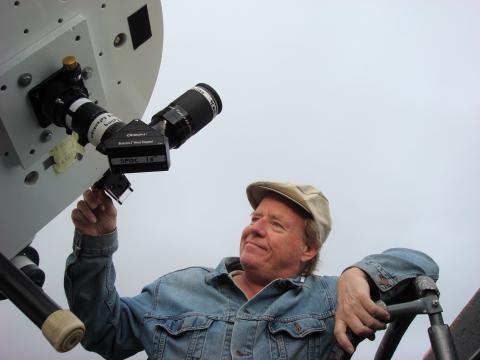
Constellations, Mythology, Star Names and a few select deep sky objects of unusual interest and surpassing beauty will be discussed.

The total eclipse of 2017 is the first one visible from the contiguous United States in 38 years. It offers millions of Americans the opportunity to bask in the light of the solar corona for two minutes. The overwhelming majority of 2017 eclipse observers are "totality virgins", having never experienced a total eclipse before.
Just what is it like to stand in the Moon's shadow and watch daylight diminish to an eerie twilight? And what does the corona really look like? Has the total eclipse been completely over-hyped by the media or is it something even more?
There are few events in life that leave a permanent, indelible impression. A total eclipse of the Sun is just such an event. The simple act of recollection can quicken the pulse as vivid memories flood one’s mind.
It all begins with such little fanfare — a tiny notch along one edge of the Sun. An hour passes as the Moon slowly creeps across the Sun’s disk. In the final minutes, daylight grows feeble. A dark curtain rises in the west as the Moon’s shadow races towards you at speeds exceeding a thousand miles per hour. Suddenly, the darkness sweeps over you as the Sun’s light flickers out and totality begins.
I will share some eclipse accounts of my own as well as those of others, illustrated with images and video captured around the world with the hope of preparing you for your own experience with totality on August 21.

For some, this will be the first time you are close to truly dark skies. Not only that, you will be in the perfect spot to experience a total solar eclipse. I know I will be taking advantage of my time here to image the daytime sights, the night sky and the total solar eclipse. This is a great opportunity to experience the Milky Way in all its grandeur and take home some amazing images of your own. You can also take some interesting images during totality and partial phases of the eclipse with a camera and tripod. In my talk we will discuss focusing, camera settings and ideas for images for both day and night imaging.

The science of meteoritics has seen a renaissance in recent years, as new instrumentation and computational techniques have advanced our understanding. Meteors, from tiny particles observed only with radar, through bodies large enough to glow as they pass through the atmosphere, provide an important window into the debris in our solar system, from dust through asteroids. Much of what we know about the formation and evolution of the Solar System stems from the study of interplanetary dust.
In cooperation with the Denver Museum of Nature and Science, I’ve been operating a network of allsky cameras across Colorado since 2001. I’ll discuss the wealth of information to be found in over 50,000 recorded meteors: fine structure in showers, evidence of new showers, details of the size distribution of bodies in the near-Earth environment, atmospheric dynamics, and much more. We’ll explore what this teaches us about the Solar System, and about potential risks to space-based assets as well as to those of us on the ground. I’ll describe the simple cameras you can build to collect your own data, and how by enlisting one or two friends you can set up your own mini-network that could let you track the next big meteor all the way to the ground, and figure out where meteorites might have landed.

Across a wide variety of science fiction movies and books, eclipses capture the audiences’ attention. Dr. Slater provides an overview of how eclipses are used by talented authors of science fiction to highlight the human experience in futuristic settings.

Where is the best place to find living life beyond Earth? It may be that the small, ice-covered moons of Jupiter and Saturn harbor some of the most habitable real estate in our Solar System. Life as know requires liquid water and these moons have lots of it under their icy crusts. In this talk I will explain the science behind why we think we know these oceans exist and what we know about the conditions on these worlds. I will focus on Jupiter’s moon Europa, which is the target of the upcoming JPL flagship Europa Clipper mission. I will also show how computational models of mantle convection are helping to inform our understanding of worlds like Europa.

Dolores Hill will discuss highlights of the exciting NASA mission to near-Earth asteroid Bennu and invite amateur astronomers to join the mission’s citizen science program: Target Asteroids!/Target NEOs! (the Astronomical League’s companion observing program). You can be an important partner in the OSIRIS-REx Asteroid Sample Return Mission and contribute observations to benefit future generations!
Dolores will show the innovative method that will be used to obtain a sample from asteroid Bennu without actually landing on the asteroid itself and explain why return of a pristine, protected sample is important. The robotic OSIRIS-REx spacecraft was launched from Cape Canaveral in September 2016. Upcoming Earth Gravity Assist will take place this September to propel the spacecraft out to asteroid rendezvous in 2018 and sample return to Earth in 2023. Already the mission has made important discoveries about Bennu and the orbital evolution of small asteroids. The samples will reveal new information about the oldest solids and organic material in the Solar System. Earth-based astronomical observations, images, spectra and a variety of maps will significantly advance our understanding of asteroid-meteorite connections, providing direct “ground truth” comparisons.
This long-term mission serves as a pathfinder for future asteroid missions and provides opportunities for amateur astronomers and public outreach. Target Asteroids! and Target NEOs! enlist amateur astronomers to observe a particular list of asteroids of interest to the OSIRIS-REx science team and future spacecraft designers. While there are much astronomical data available for Bennu, the carbonaceous target of the OSIRIS-REx mission, additional observations of other asteroids allow scientists to learn more about the entire asteroid population and place Bennu in context. Because some of these asteroids will be targets of future spacecraft missions as well, the data submitted will be useful for a long time. OSIRIS-REx Ambassadors share information about the mission with their local clubs and communities. We invite you to join the team!
*OSIRIS-REx is an acronym: Origins, Spectral Interpretation, Resource, Identification, Security-Regolith Explorer

David’s passion is to seek out things no one has seen, and new types of objects fresh from research and professional literature using large reflectors. David will share specific examples of objects he have researched and observed.

We’ve figured out all sorts of ways to get the faintest and the mostest out of CCD chips, DSLRs, and videocams. But what about your eye? Are you sure you know all the tricks? Why your daytime glasses matter, why to hug your trees, why the universe yellows as you age—and do bilberries really work? Come rouse your rhodopsin with Alan MacRobert, Senior Editor at Sky & Telescope. Alan MacRobert became an amateur astronomer in 1964, stuck with it for a reason you ought to learn and tell others, started subscribing to Sky & Telescope in 1966, and joined the magazine’s editorial staff in 1982. He has items filed away for Celestial Calendar coverage in future issues as far ahead as February 2056 (take a guess what this one is). “I may retire before I’m 105” he says, “but it’ll be in the file drawer whoever’s sitting in my chair.”

The talk will summarize the archaeoastronomy of three sites of the ancient world: Nabta Playa in southern Egypt, the earliest known example of megalithic astronomy in the world, Chaco Canyon and its Great House communities in Colorado and New Mexico, and Machu Picchu and the Sacred Valley of Peru. Nabta Playa is in the western desert of Egypt, west of Abu Simbu and was occupied from about 10,000 year BEC to perhaps 2500 BEC when the desert became hyper-arid. Beginning around 5000 BCE, a ceremonial center was built on the western edge of an internally drained lake, providing the nomadic pastoralists water and forage for their herds. They constructed a stone circle, which marks north-south and June solstice sunrise/December solstice sunset. Their most fascinating activity was to place series of megaliths in the sediments of the lake, which are oriented to Arcturus, Sirius, and α Centauri.
Chaco Canyon in New Mexico appears to have been a major pilgrimage center during the period 1000-1100 CE. The first major astronomical event was the December solstice sun rising above Fajada Butte, as seen from a nearby Great Kiva. Other astronomy involves possible petroglyphs of the 1054 supernova, the 1066 apparition of Halley’s comet, and a total eclipse of 1097. Great Houses were located to provide views of the sun and moon rising above dramatic features on the horizon, such as the moon at major lunar standstill at Chimney Rock.
Machu Picchu is the crown jewel of the Inca empire, encapsulating much of the power and mystery of the astronomy of the empire. The Inca emperor was viewed as the descendent of the sun, and massive ceremonies were established at Cusco and elsewhere to confirm and enhance his status. Evidence of those celebrations are abundant in the archaeological record..
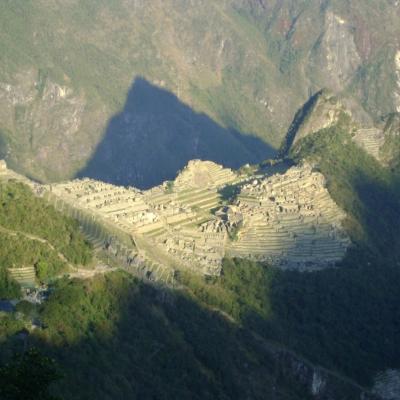
Machu Picchu at June Solstice
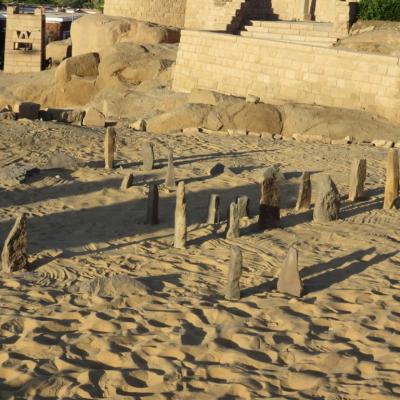
The Calendar Circle of Nabta Playa at December solstice sunset
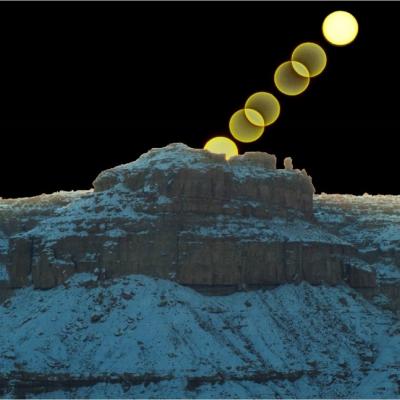
December solstice sun rising above Fajada Butte in Chaco Canyon.

In 1919, astronomers performed an experiment during a solar eclipse, attempting to measure the deflection of stars near the sun, in order to verify Einstein’s theory of general relativity. The experiment was very difficult and the results were marginal, but the success made Albert Einstein famous around the world. Astronomers last repeated the experiment in 1973, achieving an error of 11%. On August 21, 2017, using amateur equipment and modern technology, I plan to repeat the experiment and achieve a 1% error. The best available star catalog will be used for star positions. Corrections for optical distortion and atmospheric refraction are better than 0.01 arcsec. During totality, I expect 7 or 8 measurable stars down to magnitude 9.5, based on analysis of previous eclipse measurements taken by amateurs. Reference images, taken near the sun during totality, will be used for precise calibration. Preliminary test runs performed during twilight in April 2017 accurately simulated the sky conditions during totality, providing an accurate estimate of the final uncertainty.

“Space weather is driven by the interactions between the solar wind and Earth’s magnetic field, and one of the most important of these interactions is ‘magnetic reconnection,’ a fundamental process that occurs when magnetic fields interact with plasmas,” said Rice University physicist Patricia Reiff, co-author of a new paper about MMS results that’s available online this week from the journal Science.
For Reiff and her MMS colleagues, including mission principal investigator and Rice alumnus James Burch, vice president of Southwest Research Institute in San Antonio, this week’s results are the culmination of a process that began with the initial idea for MMS more than 25 years ago.
Reiff said MMS, a collection of four identical spacecraft that orbit in a pyramid-shaped formation about 6 miles wide, is specifically designed to study region of space tens of thousands of miles above Earth’s surface that is a prime location for magnetic reconnection. This region, known as the “magnetopause,” is where the solar wind — a plasma of positive ions and negative electrons that stream continuously outward from the sun — comes in contact with Earth’s magnetosphere, the region of space dominated by Earth’s magnetic field.
“Magnetic reconnection is a fundamental process that’s responsible for the aurora borealis and australis and space storms here on Earth, as well as for solar flares on our own sun and analogous stellar flares elsewhere in the universe,” said Reiff, a professor of physics and astronomy at Rice who began studying Earth’s magnetosphere more than 45 years ago with instruments left on the moon by Apollo astronauts.
“When two magnets come together, reconnection is the process whereby the magnetic field rearranges itself to link the north pole of one magnet with the south pole of the other,” she said.
Reconnection occurs when the two magnets are not exactly co-aligned. If reconnection occurs in a vacuum or an electrically non-conducting medium like Earth’s lower atmosphere, the process occurs at the speed of light and has no effect on the surrounding medium.
But each medium of space measured by MMS — the solar wind and the magnetosphere — contain a fully ionized plasma that is an excellent electrical conductor. The plasma’s negatively charged electrons and positively charged ions orbit in opposite directions about a given magnetic field line.
MMS mission spacecraft assembly
The MMS mission’s four spacecraft stacked and ready for encapsulation in the launch nose cone at Kennedy Space Center. (Photo courtesy of NASA KSC)
“When the field lines of two different magnetic fields meet in space — as they do at the magnetopause — and try to reconnect, these gyrating particles initially resist,” Reiff said. “Each field line tends to retain its own distinct set of orbiting charged particles. Reconnection occurs when the field lines draw nearer one another than the distance of the ions or electrons orbiting them, and when it occurs, the energy released by the merger is transferred to the particles, which accelerate rapidly, sometimes at nearly light speed.”
This critical distance, known as the diffusion region, is considerably larger for ions than it is for electrons, and MMS is the first spacecraft designed to probe the much smaller “electron diffusion region” where the electrons become decoupled and reconnection actually occurs. The MMS plasma instruments are much faster than any previously deployed to measure the magnetosphere, and are thus designed to catch reconnection “in the act” on its most microscopic scale.
- See more at: http://news.rice.edu/2016/05/12/nasa-probe-results-could-improve-space-weather-forecasts-2/#sthash.FXN5jNS5.dpuf
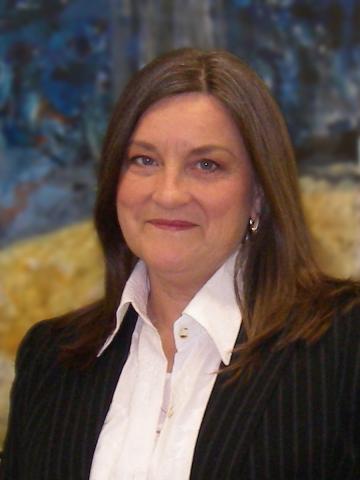
Explore the world at night through your DSLR camera. Juxtapose wide open meadow, towering mountains, and vast deserts under the Milky Way. In recent years, consumer-level sensor technology has opened the possibility of capturing images in very low-light conditions. We will combine common landscape photograph techniques with those used in more traditional forms of astrophotography to tackle the challenges of imaging the world with the sky at night.

The historically high and dry climate of the Rocky Mountain region has given rise to numerous observatories. These include the classic 1894 large refractor in Denver, and a proliferation of public and private telescope facilities ever since -- both optical and even for cosmic ray studies. In this talk, we'll trace instrumentation and observational developments, from the pre-historic use of Medicine Wheels, to refractors, reflectors and multiple telescope systems -- all within the context of the effects of light pollution and climate change on astronomy and astrophysics.

The Kepler spacecraft, launched in 2009, has been one of NASA’s most scientifically successful missions. From the first command to the spacecraft, students at the Laboratory for Atmospheric and Space Physics (LASP) at University of Colorado in Boulder have been participating in Kepler’s mission operations. Kepler has amazed the world with the discovery of numerous planets circling distant stars in our galaxy. Yet Kepler has been one of the most challenging spacecraft to operate due to several on-orbit failures. Despite these failures, Kepler continues to collect valuable astronomical data and provide a training ground for future space professionals.
Abstract:
With August’s total eclipse of the Sun fast approaching, do you want to capture images of it with your camera? Learn tips from an eclipse photography expert who has shot over 20 total eclipses. Some of the topics covered include:
- How to use any camera (even cell phones) to shoot wide-angle photos of totality
- Tips on the best telephoto lenses and telescopes for telephotography of eclipses
- What solar filters to use, and when to use them
- How to capture partial phases, the diamond-ring effect, and Baily’s beads
- How to shoot bracketed exposures to capture the inner, middle, and outer corona
Bring you camera and lens and be prepared to ask questions.

Carolyn will be talking about the Pro-Am experiences that she has had including comet and other observations. She has been involved with the International Halley Watch and will share what she had learned about comets and the solar wind from her observations.

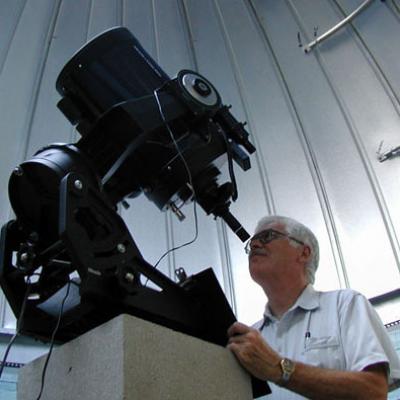 Jim will describe some of his experiences working with professional astronomers on various projects. He will then suggest ways that an interested amateur can find ways to contribute directly to advancing astronomical science.
Jim will describe some of his experiences working with professional astronomers on various projects. He will then suggest ways that an interested amateur can find ways to contribute directly to advancing astronomical science.

Presentation at Telescope Technology Workshops
There are many inflated, non-quantitative, claims about new mounts with “superb performance”. How do we evaluate these claims and test their veracity? Astrophotography images with blobby stars do not make it easy to discriminate between poor technique, poor mount design, or defective/damaged equipment. It is difficult to tell whether better results from one mount resulted from better equipment, better technique or better conditions. Fortunately, there are more quantitative techniques that can be used to evaluate a mount’s true performance quantitatively, but they are not well known by telescope users. Such techniques can help you evaluate the right time to send your mount in in for a specific repair, and when it is time to upgrade your equipment to something quantitatively better.

Like many of us I am continually in awe of the skills of the modern day amateur astrophotographer with the huge range of quality CCD astro cameras now available. If like myself, time at your telescope is limited, I will show how to use this technology to make a real and worthwhile contribution to the science of astronomy. Join me on journey starting with selection of target pairs, acquiring useable images, through to analysing those images and the publication of your results in the scientific journals you too can contribute, and still be fit to go to work the next morning! Pristine dark skies are not essential and like myself, there is a good chance of discovering new pairs, with your name preserved for posterity!

The recent completion of the Atacama Large Millimeter Array (ALMA) in Chile, the upgrade to the Very Large Array (VLA) in New Mexico, development of adaptive optics on 8 to 10 meter telescopes, and astronomy satellites such as Chandra, HST, Spitzer, Herschel, WISE, and Planck are revolutionizing our understanding of the Universe and documenting its stunning beauty.
I will take the audience on a visual, multi-wavelength tour of the Orion region. I will start with the large-scale view of the entire Winter sky from visual to radio wavelengths where we see the expanding Orion-Eridanus superbubble created by Orion’s massive stars over the last 5 to 10 million years. I will then zoom into the cauldron of star formation activity inside and immediately behind the Orion Nebula and show the remarkable images produced by HST, ground-based adaptive optics, and the ALMA array. The new sub-arcsecond resolution data reveals the complex interplay between the violent birth of massive stars and the hundreds of lower-mass ones that may once host future planetary systems.
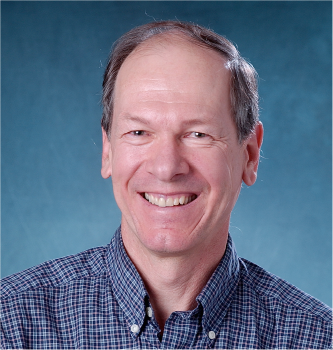
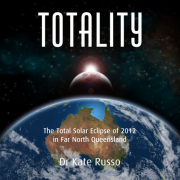 Dr Kate Russo has been engaging in researching the eclipse experience and eclipse planning for several years, starting with her surveys and interviews with eclipse chasers for her first book Total Addiction: The Life of an Eclipse Chaser. She has since surveyed and interviewed hundreds of people about their eclipse experiences. She undertook detailed research before and after the 2012 total eclipse in her home region of Far North Queensland. More recently, she undertook a post-eclipse research workshop at the Eclipse Festival in Sulawesi, Indonesia. Along with trying to put words to the indescribable experience of totality, her research also has real world applications – she undertook detailed post-eclipse interviews with eclipse coordinators in 2012 and 2015 to produce her White Paper on Community Eclipse Planning, which is being used by many communities along the path of totality for the 2017 eclipse.
Dr Kate Russo has been engaging in researching the eclipse experience and eclipse planning for several years, starting with her surveys and interviews with eclipse chasers for her first book Total Addiction: The Life of an Eclipse Chaser. She has since surveyed and interviewed hundreds of people about their eclipse experiences. She undertook detailed research before and after the 2012 total eclipse in her home region of Far North Queensland. More recently, she undertook a post-eclipse research workshop at the Eclipse Festival in Sulawesi, Indonesia. Along with trying to put words to the indescribable experience of totality, her research also has real world applications – she undertook detailed post-eclipse interviews with eclipse coordinators in 2012 and 2015 to produce her White Paper on Community Eclipse Planning, which is being used by many communities along the path of totality for the 2017 eclipse.
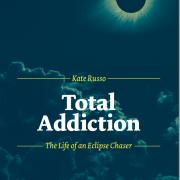 Kate is a Clinical Psychologist by profession, and is an expert in Interpretative Phenomenological Analysis. She has taken time out of her psychology career for the foreseeable future to focus on her eclipse research, planning, events and media. She is planning to relocate to the US in 2017 to do a high profile outreach tour along the path of totality.
Kate is a Clinical Psychologist by profession, and is an expert in Interpretative Phenomenological Analysis. She has taken time out of her psychology career for the foreseeable future to focus on her eclipse research, planning, events and media. She is planning to relocate to the US in 2017 to do a high profile outreach tour along the path of totality.

Eclipse chasers have long known that whatever eclipse they have just observed, another will again occur with little variation 18 years and 11.32 days in the future. All they need to do is move approximately one third of the way around the world to the west and adjust their latitude by about 200 miles. The Saros series is the pulse of solar mechanics that has made eclipses predictable events even in ancient times. At any one time an average of 38 saros serirs are active, producing eclipses at their regular intervals. In this epoch saros series produce an average of 72 eclipses extending over a 1300 year period. Accordingly, some series are old, some middle aged and some young. Saros series 145 fits in the young classification of this remarkable rythmic order of nature, and on 2017 August 21 will produce only its eighth out a future total of 43 central eclipses. All but two of those being total. A variety of factors contribute to the determination to the type of eclipse a saros will predominately produce, and we are fortunate in that those factors for saros series 145 are most favorable for the production of total rather than annular events. While the series starts with eclipses of brief totality, celestial mechanics are slowly conspiring to bring about great things. By the 25th century celestical circumstances will produce 5 six minute plus and 3 seven minute plus eclipses in the series. While historically the first five totals preceding the series imminent return have had little impact on the history of astronomy, they each have etched unforgettable memories into the conscience of those who found themselves within its path. And while the future for 145 looks brighter than its past, each eclipse of each saros series has its own call to uniqueness.

Bob Gent will give an update on the campaign to save our night skies and reduce light pollution. He will provide real-world examples where communities have passed outdoor lighting ordinances, and successfully put the brakes on the growth of light pollution. He will also discuss the recent report by the American Medical Association on the need to restrict LED streetlights. Bob recently served on a local city's outdoor lighting code task force, and he will share the techniques used to update an outdated lighting code.
Outline of the presentation:
1) Formation of the Sun and Solar System
a) Giant molecular clouds
b) Gravity and disks (interactive demo)
c) Planetesimals and planet formation
2) Stellar middle age
a) Orbit stability (interactive demo)
b) Changes in the Sun over time
3) Death of the Sun
a) Timescales----Andromeda will be here before then
b) Red Giant phase (will Earth be consumed?)
c) Planetary nebula phase (interactive demo)
d) Outstanding questions about planetary nebulae
4) Q&A with audience
--

There’s a famous journey involving a long sea voyage to India by the British Astronomical Association in 1898. The saga is highlighted in the volume, The Indian Eclipse 1898, by E W Maunder. In 1995, almost a hundred years later, I traveled by Boeing 747 to New Dehli, and filmed the eclipse using a modern television camera. The two journeys reveal some stark contrasts in how eclipses are recorded yesterday and today. Follow along with fascinating historical stories of the efforts to record the two eclipses, including some personal anecdotes. Finally we’ll journey into space to preview the 2017 event which can be enjoyed from unique vantage points from anywhere in space using planetarium software.

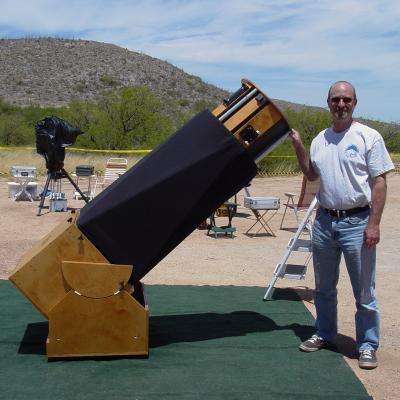 Whether you're observing the night sky with binoculars, telescopes, or even the naked eye, there is lot of detail waiting to be seen if you employ the right techniques. Photographs are time exposures that can bring out color and certain features, but there are many details that the dynamic range of the human eye can detect that photos do not show! Seeing the fine points in an object is one of the most exciting aspects of observing, and this talk will review many "tricks of the trade." We will cover topics such as dark adaptation, averted vision, good optics, seeing conditions, optimizing the body, appropriate cover, and more.
Whether you're observing the night sky with binoculars, telescopes, or even the naked eye, there is lot of detail waiting to be seen if you employ the right techniques. Photographs are time exposures that can bring out color and certain features, but there are many details that the dynamic range of the human eye can detect that photos do not show! Seeing the fine points in an object is one of the most exciting aspects of observing, and this talk will review many "tricks of the trade." We will cover topics such as dark adaptation, averted vision, good optics, seeing conditions, optimizing the body, appropriate cover, and more.

Of all the known forces of Nature, gravity plays a singularly important role in the Cosmos --- it is the only force that matters on the mind-bogglingly large scale of the entire Universe. It drives the formation of star systems, it forces stars to ignite nuclear fires in their cores, it keeps galaxies bound together, and it tells the story of the beginning of the Cosmos as well as what it's ultimate fate might be.
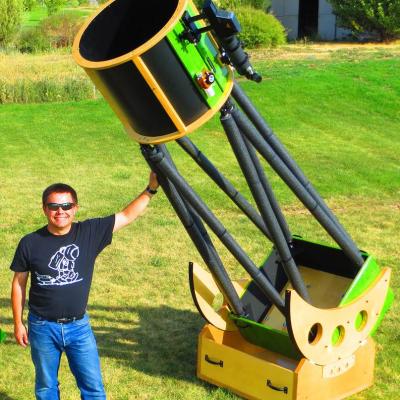 Our modern understanding of gravity is called General Relativity, described by Albert Einstein in 1915. One of the first major astronomical tests of general relativity was the observation of the total solar eclipse by Eddington on 29 May 1919. Since then, we have made remarkable discoveries that build on that early, first test of gravity.
Our modern understanding of gravity is called General Relativity, described by Albert Einstein in 1915. One of the first major astronomical tests of general relativity was the observation of the total solar eclipse by Eddington on 29 May 1919. Since then, we have made remarkable discoveries that build on that early, first test of gravity.
In this talk we'll revisit Eddington's observations and the role they played in cementing our understanding of gravity. We'll then leap forward a century, to the modern day, to talk about how a new kind of astronomy -- gravitational wave astronomy -- is transforming our understanding of the Cosmos, and the role that both professional and amateur astronomers are playing in opening our minds to the Gravitational Universe

Talk outline
Setting Intentions and Goals
Use of an Astronomical Database
Preparing your Observing Outing
Where to Go Observing
Achieving Better Contrast in the Field of View
Star Hopping Tutorial
What to Record While Observing
Post Observing Activities
Astronomical League Observing Program Discussion
How to Complete Southern Hemisphere Observing Programs
Summary Wrapup
Questions

Of all the wonders of the sky, perhaps the most awesome is that unexpected appearance of an eclipse. Yet, many students encounter unexpected difficulty in explain the physical processes leading to eclipses and their prediction. Recent advances in cognitive science help explain students’ reasoning difficulties and give guidance to amateur astronomers trying to demystify eclipses for the general public.
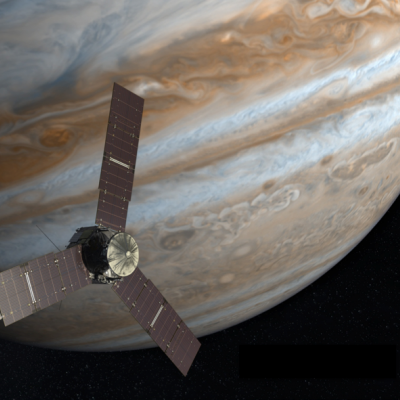
Juno’s principal goal is to understand the origin and evolution of Jupiter. Underneath its dense cloud cover, Jupiter safeguards secrets to the fundamental processes and conditions that governed our solar system during its formation. As our primary example of a giant planet, Jupiter can also provide critical knowledge for understanding the planetary systems being discovered around other stars. With its suite of science instruments, Juno will investigate the existence of a solid planetary core, map Jupiter's intense magnetic field, measure the amount of water and ammonia in the deep atmosphere, and observe the planet's auroras. Juno will let us take a giant step forward in our understanding of how giant planets form and the role these titans played in putting together the rest of the solar system. NASA’s JUNO mission was launched in August 2011 and starts orbiting over Jupiter’s poles on July 14, 2016. JUNO carries instruments that will probe Jupiter’s deep interior and measure the amount of water — a key component of solar system evolution. JUNO is the first spacecraft to fly over Jupiter’s aurora and will measure both the energetic particles raining down on the planet and the bright “northern & southern lights” they excite.
